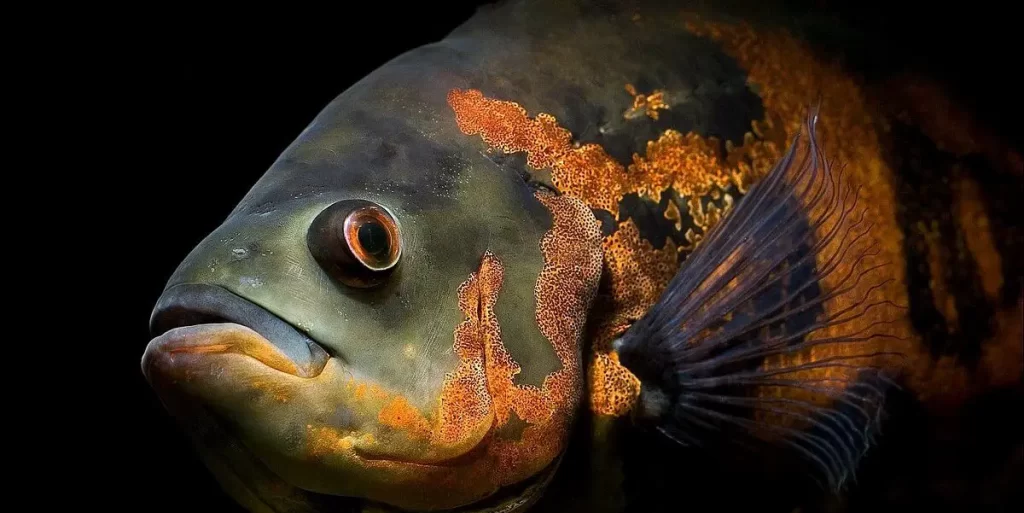Algae In Fish Tank: Types, Causes, And Control Methods
In the world of aquariums, Algae in Fish Tanks can be an annoying problem. These unwelcome green invaders often make your underwater world less inviting. Understanding the Algae Types, Causes, and Control Methods in a fish tank is essential for maintaining the beauty and balance of your underwater ecosystem.
Quick Answer:
Algae in fish tanks can take many forms, from vibrant green to slimy blue-green varieties. Their growth is sparked by factors like excessive light, nutrients, and poor tank maintenance. Control methods involve adjusting light exposure, managing nutrients, and regular tank upkeep.
In this comprehensive guide, we delve into the diverse world of algae that might invade your fish tank. We explore their types, dissect the root causes of their proliferation, and equip you with effective control methods. By the end, you’ll be well-prepared to tackle algae issues and provide a healthier environment for your cherished fish.
What Is Algae?
Algae are living organisms that can be found in various types of water, including fish tanks.
What makes them interesting is that they don’t have roots, stems, or leaves as plants do. However, they have a special pigment called chlorophyll, which helps them create their food.
In an ecosystem, you can discover many different kinds of algae, ranging from tiny single-celled ones to large seaweed plants.
In aquatic ecosystems, these small algae play a crucial role. They are like talented chefs who use sunlight to produce their food, benefiting numerous other creatures in the water.
But sometimes, having too much algae can become a problem for fish and other aquatic life. Certain types of algae can make the water dirty or even toxic. That’s why it’s important to keep an eye on their growth and ensure they don’t take over your fish tank.
Is Algae Bad For My Fish?
You might be wondering if algae are bad for your fish. Well, the answer is a bit complex.
Algae can have both positive and negative effects on your fish, which can be a little confusing. On one hand, algae can serve as an additional food source for your fish and produce oxygen that is beneficial for their breathing.
On the other hand, excessive algae levels can be problematic as they consume more oxygen than they produce, leading to algae blooms. These blooms turn the water green and can harm or even kill the fish.
It can also help to filter out harmful substances like ammonia, nitrite, and phosphates from the water, which is crucial for maintaining a healthy nitrogen cycle in your tank.
However, if your tank is already well-balanced and you’re taking good care of your fish, excessive algae growth can be harmful to the ecosystem of your aquarium.
Too much unwanted algae can make your tank look dirty and prevent you from achieving the beautiful tank you’ve always envisioned. Additionally, an abundance of algae can absorb all the dissolved minerals in the water that could otherwise be beneficial to your fish. So, while having some algae is alright, an excess can negatively impact your tank and its inhabitants.
How Are Algae Formed in Fish Tanks?
Algae in fish tanks form through a process that relies on photosynthesis. These organisms need water, nutrients, and light to grow and reproduce. The combination of these elements in fish tanks creates an ideal environment for algae to thrive.
Various sources contribute to the formation of algae in fish tanks. Fish waste, excess food, and decaying plant matter can release nutrients such as nitrogen and phosphorus into the water, which become fuel for algae growth. Essentially, a fish tank provides all the necessary resources for algae to flourish.
Moreover, excessive exposure to light can trigger an overgrowth of algae in the tank. While some algae growth is natural and even beneficial for the fish tank ecosystem, too much can cause issues like cloudy water, reduced oxygen levels, and potential harm to the fish and other aquatic life. Hence, it’s crucial to maintain a proper balance of nutrients, light, and filtration to keep algae growth in check.
Types Of Algae And Its Effects
There are many different types of algae that you can find in fish tanks and other aquatic environments. Here are a few of the most common types of algae:
1. Black Beard Algae (Audouinella/Black Brush Algae/BBA)
Black Beard Algae, also known as Audouinella or Black Brush Algae (BBA), is a type of algae that can thrive in both freshwater and saltwater aquariums. It earned its name due to its distinctive appearance, resembling a dark brush or beard. These algae typically form clusters and can grow up to 0.5 cm in length, displaying a purplish-black color attributed to the production of phycoerythrin, a specific protein. Black Beard Algae might appear on plant leaves’ edges or metal surfaces within your fish tank. To prevent its growth, it’s essential to maintain proper lighting and CO2 levels in your aquarium, creating an environment less favorable for Black Beard Algae to thrive.
Here are some of the key effects of Black Beard Algae in fish tanks:
1. Aesthetic Concern
The presence of Black Beard Algae can significantly affect the visual appeal of your aquarium.
2. Harm to Aquatic Plants
These algae can latch onto your aquatic plants, hindering their growth and potentially harming them.
3. Nutrient Competition
Black Beard Algae may outcompete other aquatic plants for essential nutrients, potentially impacting their health.
4. Choking Water Circulation
Excessive growth can lead to blockages and hinder proper water circulation in your tank.
5. Fish Discomfort
If left unchecked, Black Beard Algae can create a less hospitable environment for your fish.
2. Blanket Weed (Cladophora)
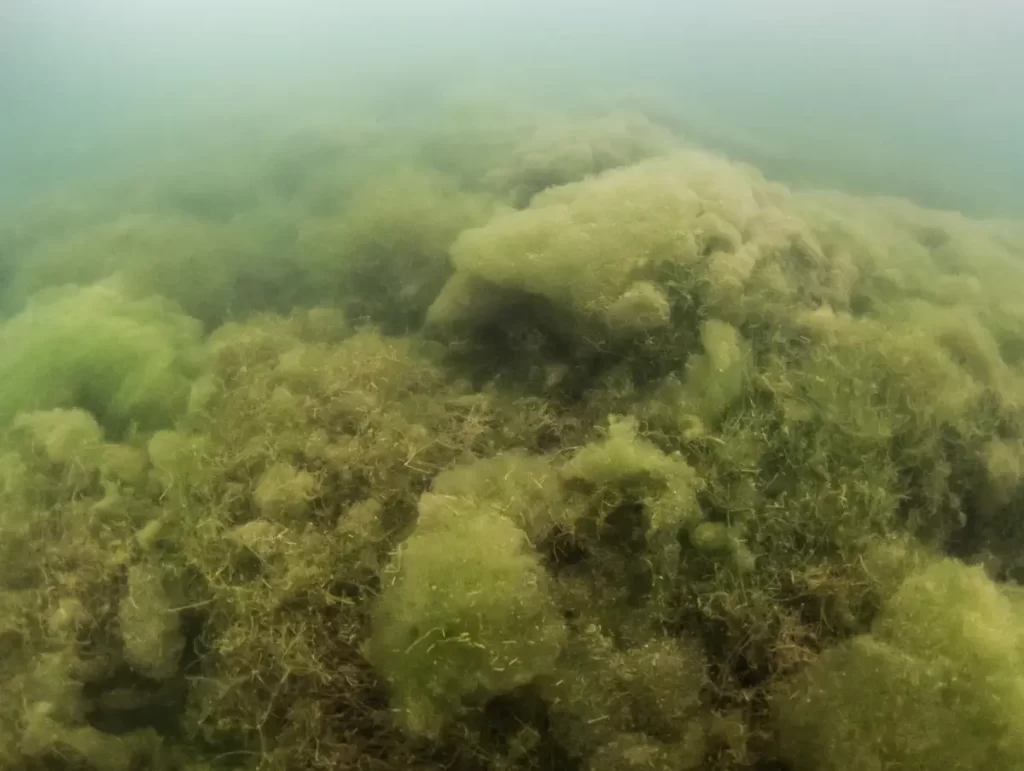
Blanket Weed, scientifically known as Cladophora, is a type of green algae that commonly appears in fish tanks. This algae takes on the appearance of long, stringy threads, resembling a rough, tangled blanket. It tends to thrive in aquariums with low carbon dioxide levels and limited nutrient content, making it a common concern for fish tank enthusiasts. To prevent the growth of Blanket Weed, maintain proper water circulation, and ensure a well-balanced nutrient environment.
Here are some of the key effects of Blanket Weed Algae in fish tanks:
1. Blocks Filters
Blanket Weeds can accumulate and block the aquarium filter, reducing its efficiency and potentially harming the overall water quality.
2. Hinders Water Circulation
As it grows, Blanket Weed can obstruct water flow, leading to stagnant areas in the tank. This stagnant water may become a breeding ground for other algae or affect the health of aquatic inhabitants.
3. Competition for Nutrients
Blanket Weed competes with other aquatic plants for nutrients, potentially causing imbalances in the ecosystem and affecting the growth of desirable plants.
4. Aesthetic Concern
The unsightly appearance of Blanket Weed can detract from the visual appeal of the aquarium, making it less enjoyable to observe.
5. Impact On Fish Health
In severe cases, Blanket Weed can compromise the health of fish by reducing their swimming space, and oxygen availability, and causing stress.
3. Blue-Green Algae (BGA)
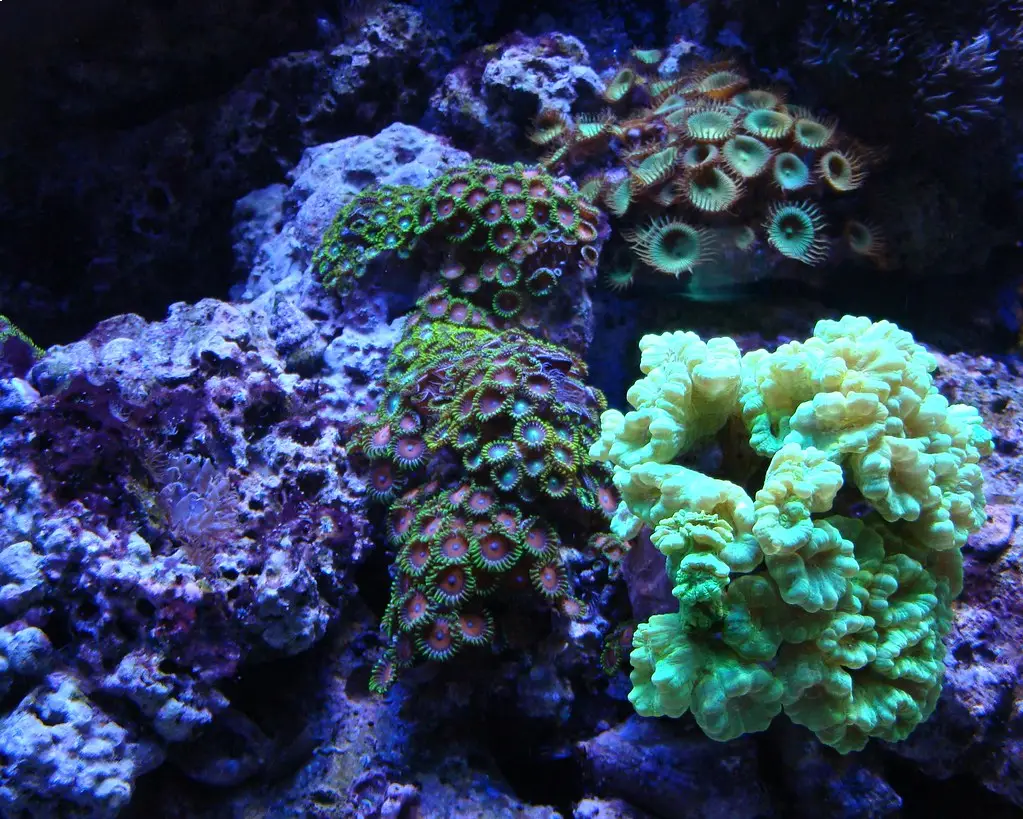
Blue-green algae (BGA) is a unique entity as it’s not algae but a type of photosynthetic bacteria known as cyanobacteria. In your aquarium, it appears as a slimy mat, with colors ranging from blue to green. One interesting characteristic is its ease of removal, but it can quickly return if exposed to excessive light. These persistent microorganisms thrive in still waters and dirty substrates or filter media. To remove BGA, monitor and control areas with excessive light exposure and maintain proper water circulation. Regular substrate and filter medium cleaning are essential to prevent its resurgence.
Effects of Blue-Green Algae (BGA) are:
1. Water Deoxygenation
BGA can deplete oxygen levels in the water, making it harder for fish to breathe and thrive.
2. Toxin Production
Some strains of BGA produce toxins harmful to fish, leading to health issues or even fatalities.
3. Unsightly Appearance
The slimy, colorful mats can be an eyesore in your aquarium, affecting its overall aesthetics.
4. Altered Water Chemistry
BGA can impact water parameters, making it less suitable for your fish’s needs.
4. Brown Algae (Diatoms)
Brown Algae, also known as Diatoms, are a common sight in newly established fish tanks. Recognizable by their brown patches on surfaces, glass, and substrate, these diatoms thrive in both freshwater and saltwater aquariums, especially when tap water with elevated nitrate and phosphate levels is used. They feed on these chemical compounds, primarily nitrates and phosphorus.
Managing brown algae is a straightforward process. You can eliminate it through vacuuming or gentle scraping. Over time, as your tank’s filter and substrate mature, the brown algae issue will naturally resolve itself.
Effects of Brown Algae (Diatoms) are mentioned below:
1. Aesthetic Disturbance
Brown algae can mar the appearance of your aquarium, diminishing its visual appeal.
2. Reduced Light Penetration
Heavy diatom growth may hinder light penetration, affecting the well-being of aquatic plants.
3. Nutrient Competition
Excessive diatoms can compete with other aquarium plants for essential nutrients, potentially hampering their growth.
5. Fuzz Algae
Fuzz algae, commonly referred to as beard algae or brush algae, is a type of algae that resembles fuzzy, hair-like growth and can be found in aquariums. Once it starts growing, it can be quite challenging to eliminate and tends to rapidly spread throughout the tank. Fuzz algae typically develop due to an excess of nutrients in the water, inadequate water movement, or poor lighting conditions.
To prevent fuzz algae from taking over your aquarium, it’s important to maintain a balanced environment and avoid overfeeding your fish. If you already have fuzz algae in your tank, there are a couple of methods you can try to remove it. Manual cleaning can be effective by physically removing the algae or using specific treatments designed for algae control.
Effects of Fuzz Algae are:
1. Aesthetic Nuisance
Fuzz algae can significantly detract from the visual appeal of your aquarium.
2. Nutrient Imbalance
Their rapid growth often indicates an imbalance in the tank’s nutrient levels, which can affect other aquatic plants.
3. Potential Light Blockage
If left unchecked, fuzz algae can obstruct light, hindering the growth of beneficial aquatic plants.
4. Oxygen Depletion
As fuzz algae can overgrow and inhibit plant growth, it may lead to reduced oxygen production in the tank.
6. Green Aquarium Water Algae
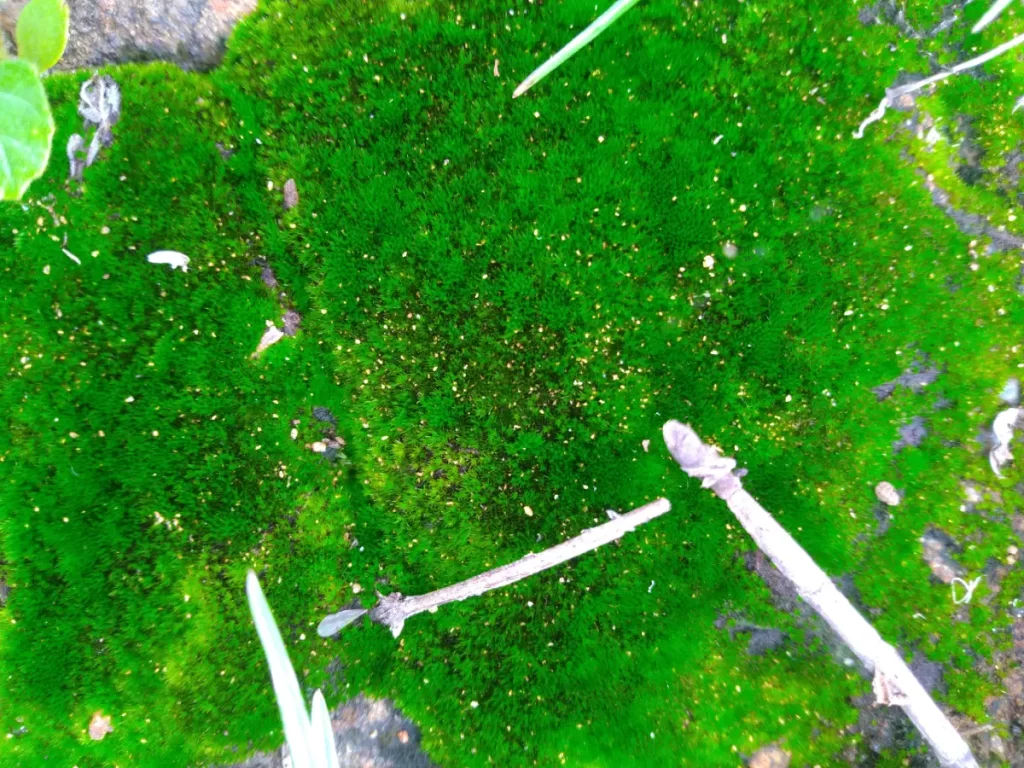
Green water algae, often known as unicellular algae, can transform the water in your fish tank into a murky green coloring reminiscent of pea soup. These minuscule plants possess the remarkable ability to thrive under such conditions, creating the distinct appearance of green water. This type of green algae tends to increase when there is an excess of ammonia, prolonged exposure to intense light, or an abundance of nutrients in the water.
Unfortunately, green water is unfavorable for your fish as it obstructs their access to essential light and can hamper respiration. The good news is that you can eradicate these algae by performing a substantial water change and allowing your tank to remain in darkness for a few days by switching off the lights.
Effects of Green Water Algae are:
1. Reduced Visibility
Green water diminishes the clarity of your aquarium, making it challenging to observe your fish.
2. Light Deprivation
Excessive algae can limit the penetration of light, affecting the growth of aquatic plants.
3. Respiratory Issues
As green water algae proliferate, oxygen levels can decline, potentially causing respiratory stress for your fish.
7. Green Dust Algae (GDA)
Green Dust Algae, commonly known as GDA, is frequently observed as a green, dust-like substance coating the glass of your aquarium. When it increases significantly, it can cover your view through the glass. GDA often makes an appearance in new tanks, typically due to low nutrient levels and inadequate carbon dioxide.
In case you haven’t adequately prepared your tank before introducing fish and plants, GDA can establish its presence swiftly. However, there’s no need to worry, as a solution exists. The most effective approach is to be patient and allow GDA to undergo its nitrogen cycle, which spans approximately four weeks. By doing so, you can successfully eliminate it.
Effects of Green Dust Algae (GDA):
1. Impaired Visibility
GDA can coat the glass, obstructing your view of the tank’s interior.
2. Obfuscation
GDA can cover the aesthetics of your aquarium and make it less appealing.
8. Green Spot Algae (GSA/Coleochaete Orbicularis)
Green Spot Algae, unlike Green Dust Algae, is a commonly encountered problem in aquariums where stubborn green spots tend to display on different surfaces. The appearance of Green Spot Algae can be attributed to several factors, including poor water conditions, excessive lighting, and insufficient levels of phosphates and carbon dioxide.
To ensure your tank maintains its pristine appearance and thwart the growth of Green Spot Algae, consider enhancing the levels of phosphates and carbon dioxide. Implementing these adjustments can assist in preserving the beauty and health of your aquarium.
Some effects of Green Spot Algae are:
1. Aesthetic Concerns
Green Spot Algae can spoil the visual appeal of your aquarium.
2. Surface Coating
It tends to form distinct green spots on various surfaces.
9. Hair/Thread Algae
Hair/Thread Algae, also known as String Algae, are lengthy, green filaments that tend to attach themselves to aquatic plants. These algae possess a soft texture and can grow to varying lengths. Their increase is primarily attributed to a deficiency in carbon dioxide within your aquarium.
To prevent Hair/Thread Algae infestation, a few key adjustments can be made. Firstly, reduce the intensity of light exposure to your aquarium. Furthermore, consider boosting the levels of carbon dioxide. These measures are effective in eradicating Hair/Thread Algae, ensuring the vitality of your aquatic plants.
Effects of Hair/Thread Algae are:
1. Unsightly Appearance
Hair/Thread Algae can diminish the aesthetic appeal of your aquarium.
2. Attachment To Aquatic Plants
They typically attach themselves to aquatic plants.
10. Oedogonium Algae
Oedogonium Algae is a captivating variety of green algae frequently encountered in freshwater aquariums. These algae manifest as slender, elongated threads and possess the remarkable ability to generate tiny cells known as zoospores, which aid them in mobility.
Oedogonium Algae, though often considered a nuisance in aquariums, play a vital role in aquatic ecosystems, which can be quite beneficial. These algae serve as a fundamental food source for various aquatic organisms, contributing to the overall health and balance of the ecosystem. They form an integral part of the food web, sustaining herbivorous species and, in turn, providing nourishment for higher trophic levels. In this way, Oedogonium Algae support a thriving aquatic environment and help maintain the delicate equilibrium of the underwater world. Their presence ensures a harmonious coexistence of species, emphasizing their positive impact on the ecosystem.
11. Rhizoclonium Algae
Rhizoclonium Algae present a distinct variety of algae reminiscent of hair algae, distinguished by a somewhat slimy texture. They often form bushy structures and exhibit a soft feel upon touch. The growth of these algae is typically influenced by factors such as limited water flow, nutrient deficiencies, and low carbon dioxide levels.
To combat Rhizoclonium Algae infestations, employing a two-pronged approach can prove effective. Firstly, introducing certain fish species, such as shrimps, to your aquarium can act as natural predators, helping to keep the algae population in check. These aquatic species have an appetite for Rhizoclonium Algae, contributing to its control. Additionally, implementing a regular cleaning schedule for your tank is vital.
Effects of Rhizoclonium Algae are:
1. Aesthetic Concerns
The presence of Rhizoclonium algae can be visually unappealing, affecting the aesthetics of your aquarium.
2. Nutrient Imbalance
Their growth may indicate nutrient imbalances in the tank, warranting adjustments in water conditions.
12. Staghorn Algae (Compsopogon sp.)
Staghorn Algae, scientifically known as Compsopogon sp., derive their name from their resemblance to the branches of a deer’s antlers. These algae exhibit a grayish color and often affix themselves to various elements within the aquarium, including plants, decorations, and equipment.
If your aquarium tends to suffer from an excess of nutrients due to overfeeding, it can create an ideal environment for Staghorn Algae to flourish. To counteract their growth, you may consider enhancing the carbon dioxide levels in your tank and deploying an efficient filtration system to uphold water cleanliness.
Effects of Staghorn Algae are:
1. Aesthetic Disruption
The growth of Staghorn Algae can disrupt the visual appeal of your aquarium.
2. Nutrient Imbalance
Their proliferation is a potential indicator of nutrient imbalances in the tank, which may affect other aquatic flora.
3. Attachment To Aquatic Elements
Staghorn Algae can adhere to and encumber aquarium plants, decorations, and equipment.
4. Reduced Oxygen Production
Overgrowth of these algae can hinder the growth of beneficial aquatic plants, potentially reducing oxygen production in the tank.
What Causes Excessive Algae Growth?
Excessive algae growth in your fish tank can be caused by a variety of factors. Some of the most common reasons include:
1. Overfeeding
When you feed your fish an excessive amount of food, it can create a mess in the water. This mess becomes a delicious meal for the algae, causing them to grow excessively. Therefore, it’s crucial to ensure that you only provide your fish with the appropriate amount of food they require.
2. Excess Nutrients
If you give your fish too much food, you’ll notice an increase in fish waste or the presence of dead plants in your tank. This leads to a buildup of nutrients such as nitrogen and phosphorus. These nutrients become a feast for algae, causing them to grow excessively.
3. Poor Water Circulation
When water circulation is inadequate, it can encourage the growth of algae by lowering oxygen levels and increasing nutrient levels. This can have negative effects on your fish, as it provides a comfortable environment for algae to thrive and multiply.
4. Too Much Light
Direct sunlight or prolonged exposure to artificial light can stimulate algae growth in fish tanks. Using aquarium lights for extended periods can also contribute to algae growth. Therefore, it’s crucial to monitor and control the amount of light your aquarium receives.
5. High Phosphorus Level
High levels of phosphorus in the water can contribute to the growth of algae. When there are excess phosphates in the water, it can fuel the growth of algae.
6. Poor Tank Maintenance
Lack of cleanliness and tank maintenance can lead to an excess of organic matter and nutrients in the water. It provides the perfect conditions for algae to live and grow out of control. So, it’s essential to maintain your tank regularly to keep it clean and healthy for your fish and plants.
How To Get Rid Of Excess Algae Growth In A Fish Tank Naturally?
It’s always better to go for natural methods to control excess algae growth in your fish tank instead of using harsh chemicals that can harm your fish. Not only are natural methods safer for your aquatic pets, but they can also be just as effective in keeping your tank clean and healthy. So, here are some of the natural methods:
1. Use Natural Algae Eaters
Natural algae eaters like Siamese algae eaters, Otocinclus catfish, Amano shrimp, and nerite snails are great options to help control algae growth in your tank. These creatures can keep your tank clean and balanced without the need for harsh chemicals that could harm your fish.
2. Reduce The Amount Of Light Exposure
This method is an easy and natural way to keep your tank clean and healthy. Algae can overgrow in light. So, you can start to control them from taking over your fish tank by reducing the amount of time your tank lights are on or using a gentler light bulb. This will create an environment that’s less friendly to algae, without hurting your fish with harsh chemicals.
3. Control Nutrients
Algae need nutrients like nitrates and phosphates to grow big and strong, so you can stop them from taking over your tank by controlling and reducing these nutrients in the water. One way to do this is by doing regular water changes, which will help remove excess nutrients. Also, don’t feed your fish too much and avoid having too many fish in your tank because that can create too much waste, which can lead to too many nutrients in the water.
4. Increase Maintenance
You should perform regular tank maintenance too to control algae growth. All you have to do is just remove excess nutrients and waste from the water to create a healthier environment for your fish and plants. This can be achieved by performing regular water changes, cleaning the filter, and vacuuming the substrate. So, you can prevent algae from taking over and ensure that your aquatic pets live in a beautiful, healthy environment.
5. Plant Heavily
Live plants absorb nutrients that the algae need to grow. You can choose some fast-growing plants like hornwort, anchor,s, or java moss that are great for keeping algae in control.
It’s important to keep in mind that algae growth is a natural and necessary part of the tank ecosystem. While excessive algae growth can be harmful to the tank and its inhabitants, a completely algae-free tank may not be possible or desirable for a healthy fish tank.
How to Prevent Unnecessary Algae Growth in a Tank?
If you want to prevent excessive algae growth in your fish tank, here are some simple methods you can take, they are as follows:
1. Reduce The Temperature
You can try reducing the temperature of your tank water. Algae tend to survive in warmer water, especially if the water heater is running constantly. During the winter months, it’s less likely to see algae growth in your tank, as the water automatically cools because of the cold temperature. So, during the summer, you can keep the water temperature at or below room temperature to help prevent excessive algae growth.
2. Clean the Tank Frequently
Keeping your fish tank clean is important to prevent excessive algae growth. When you don’t clean your tank often, it can get dirty and make algae grow more. So, it’s a good idea to clean your tank regularly and change the water often. This will help keep your fish and plants healthy and your tank looking nice.
3. Use Good Filter Media
To keep your fish tank from becoming a paradise for algae, using filter media that removes phosphate and carbon dioxide can be a great strategy. Algae love high levels of these things, so by taking them out of the equation, you’re making it less likely for algae to live in your tank.
4. Minimize Additives
Excessive use of additives such as fish food and chemicals in your tank can contribute to an increase in nutrient levels, providing a food source for algae. To avoid this, it’s recommended to minimize the amount of additives you use or provide to your fish in the tank.
5. Add Live Plants
Plants compete with algae for nutrients and carbon dioxide, so the more plants you have, the fewer nutrients there are for algae to grow. Also, live plants provide natural hiding places for fish and other aquatic creatures. So, adding live plants to your aquarium is a great way to prevent excessive algae growth
6. Frequent Water Change
Performing weekly water changes is the best way to keep your tank free from excess algae. This helps to reduce the nutrient levels in the water and removes nitrates, which are a major food source for algae. It will keep the nutrient and chemical levels in check. So, make sure to keep up with your water changes to keep your tank looking great.
7. Cover The Tank With A Lid
You can cover your tank with a lid to prevent water evaporation and maintain the chemical balance. This also helps to keep dust and debris out of the water. When you need to add water, be sure to use dechlorinated water and add phosphate-reducing chemicals if needed. This will help to keep your tank clean and not suitable for algae growth.
8. Don’t Overfeed Fish
It’s important to avoid overfeeding your fish, as excess food can increase the level of phosphates in the water, which can lead to algae growth. Instead, feed your fish small portions and remove any uneaten food after about 5 minutes. This will help keep the nutrient level in your tank balanced and prevent algae from overgrowing.
9. Avoid Over Exposure To Lights
Algae love light, but your fish don’t need it all the time. You can give them about 8-10 hours of light each day. Also, don’t put your tank in direct sunlight, because that’s like giving algae a free ride. Also, be careful not to feed your fish too much, because extra food can give algae the food they need to grow.
10. Clean Decorations And Gravel
Sometimes, leftover food and fish waste can get stuck in the gravel or decoration that the filter can’t reach. That’s why it’s a good idea to check on them regularly and use a special tool called a siphon to clean the gravel. In this way, you can help prevent algae from growing too much in your tank.
Useful Materials to Remove Algae from the Tank
If you’re dealing with an algae problem in your fish tank, there are several materials you can use to clean it up. Here are some common options for removing algae from your aquarium:
1. Algae Scrapers

Algae scrapers are special tools that you can use to clean your fish tank. They usually have a sharp blade or a rough pad that you can use to remove the algae that sticks to the glass or other surfaces of the tank. API ALGAE SCRAPER is highly recommended while using Algae Scrapers.
2. Algae Pads
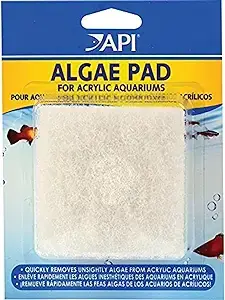
These algae pads are made from materials like microfiber or nylon, which won’t scratch or damage the glass. You can simply wipe the algae away with the pad, and rinse it out when you’re done. It is a quick and easy solution to get rid of algae buildup on your tank’s glass. They are reusable and can be washed and used again multiple times. Alage Pads such as Aquarium Pharmaceuticals 44 Hand Held Pad are highly recommended for you.
3. Razor Blade
Another tool you can use to remove algae from the glass is a razor blade. You should use this razor blade with proper care and attention as it may scratch the glass or harm any fish or plants in the tank. It’s important to be gentle and use a light touch when using a razor blade. Only scrape in those areas where there are no fish or delicate plants.
4. Gravel Vacuum
![]()
A gravel vacuum also known as a siphon can help you to remove algae from the bottom of the tank or on decorations and gravel. You just have to insert the intake tube into the substrate to create a siphon and pull out debris and algae. Gravel Vaccum like EHEIM Quick Vac Pro Automatic Gravel Cleaner and Sludge Extractor is highly recommended for you.
5. Bleach
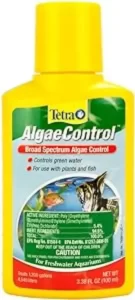
Bleach should be used as a last option or tool for removing algae from the tank. A diluted bleach such as Tetra Algae Control Liquid can be effective at removing stubborn algae from the tank. However, caution and safety measures are necessary, as bleach can be harmful to fish and other aquatic creatures when overdone. It’s important to follow the manufacturer’s instructions and safety precautions before using bleach. You should make sure that the tank is rinsed and dechlorinated properly afterward to avoid any harm to your fish or plants.
Remember, these tools can help you remove algae from your fish tank, but it’s also important to take care of your tank to prevent algae from growing too much. Things like feeding your fish the right amount and cleaning your tank regularly can help stop too much algae from growing.
Algae Eating Fish For Algae Control
Some fish can help to eat and control algae growth, as well as provide a natural and beautiful addition to your aquarium. Several species of fish are commonly used to help control algae growth in fish tanks. You should ensure that they are compatible with your other fish and the tank’s environment. So, here are some of the algae-eating fish for algae control in a fish tank:
1. Chinese Algae Eater

Chinese algae eaters are cool fish that can help keep your tank clean by eating algae off surfaces like rocks and the glass of your aquarium. They have a special mouth that works like a sucker to help them attach to surfaces and scrape off the algae. They love to eat and can eat a lot of algae in a short amount of time.
But as Chinese algae eaters grow up, they can sometimes become mean and attack other fish. So, you can add some of this algae eater only with compatible fish such as tetras, gouramis, and cichlids.
2. Siamese Algae Eaters
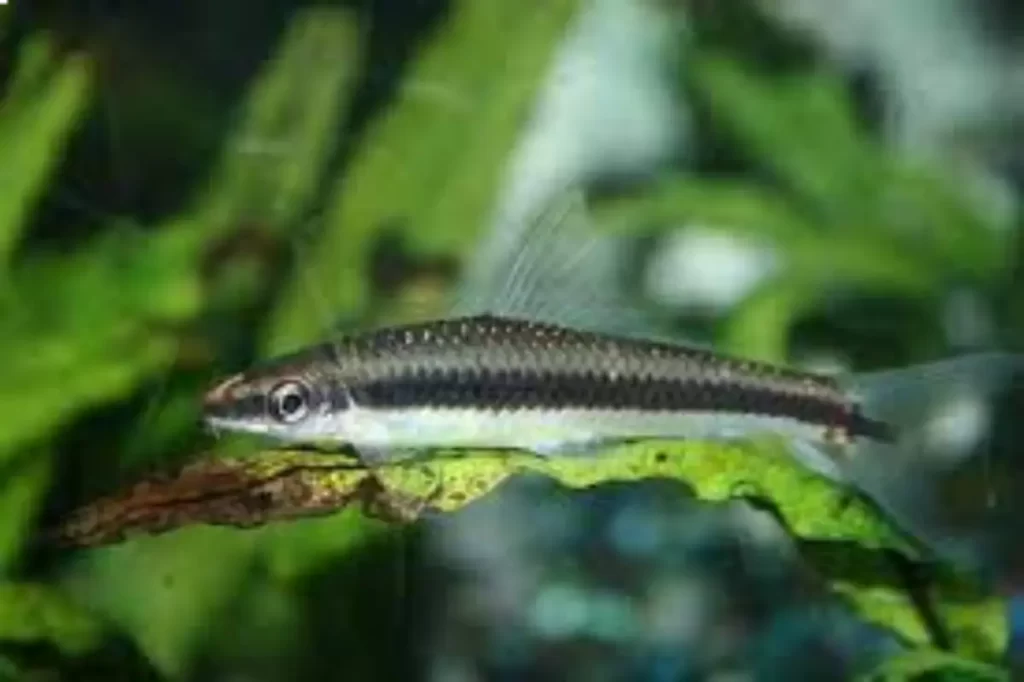
The Siamese algae eater can eat various types of algae, such as hair algae and brown algae. They have slender bodies with small mouths, which they use to scrape algae off surfaces. Siamese algae eaters are also known to be peaceful and can be kept with a variety of other community fish, such as tetras, rasboras, and gouramis. You can keep them in groups of three or more to prevent any potential aggression.
3. Mollies
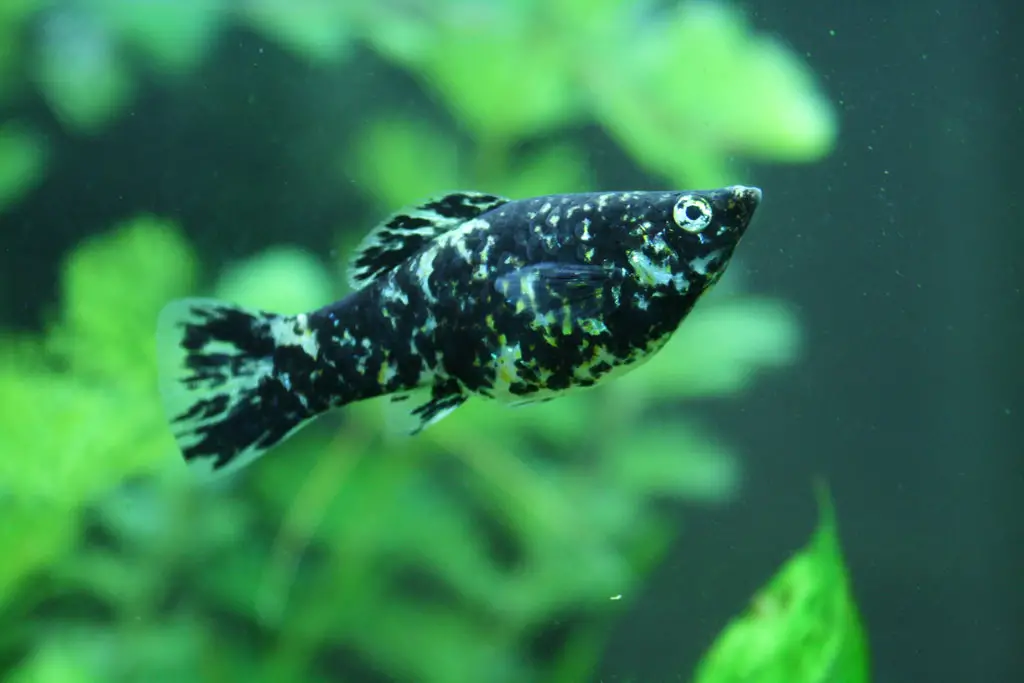
Mollies, particularly the Black Molly and Sailfin Molly species, are known to be effective algae eaters that can help control algae growth in fish tanks. They are generally peaceful and can be kept with a variety of other fish species, including tetras, guppies, and swordtails. However, it’s important to note that Mollies do have a tendency to breed frequently and can quickly overpopulate a tank if not properly managed.
4. Plecos

Plecos are cute and curious fish that have a big appetite and can eat many types of algae, including green and brown algae. They can grow quite large, so they need a tank that’s big enough to accommodate their size. Also, these fish prefer hiding places like rocks and caves in the tank, so make sure to provide them with some hiding spots. You can add some peaceful community fish like tetras and guppies with plecos.
5. Otocinclus Catfish
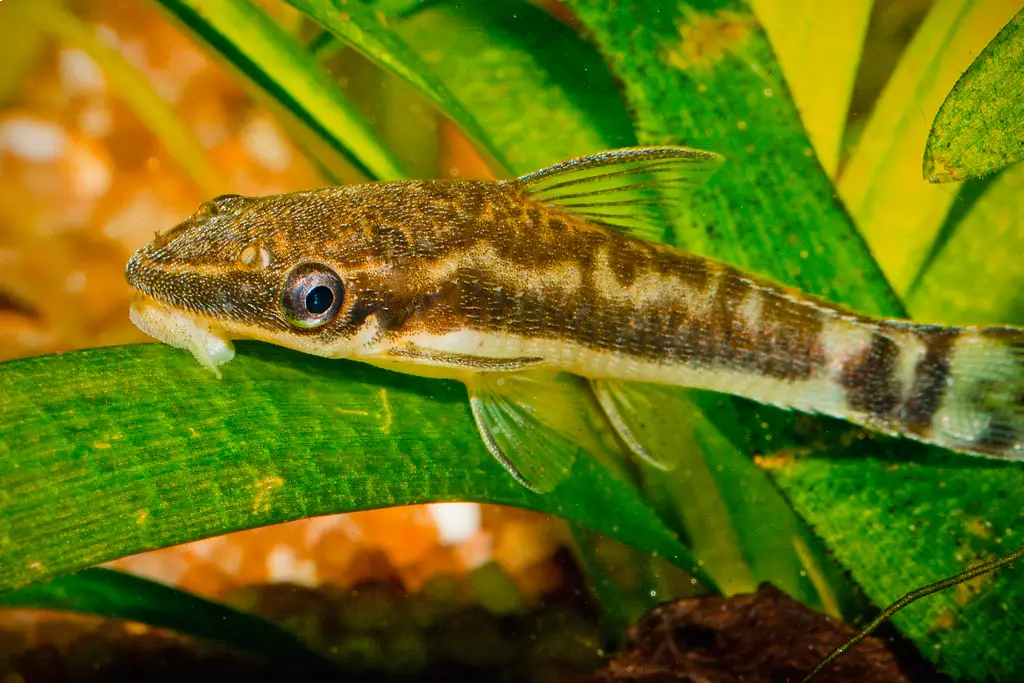
These Otocinclus catfish are known for their ability to eat algae off of plant leaves and glass surfaces. Otocinclus Catfish are also compatible with many other peaceful fish species, such as tetras and guppies. They are relatively easy to care for and are a good choice for beginners like you. Otocinclus catfish prefer to live in groups, so it’s recommended to keep them in groups of 5 or more.
6. Bristlenose Catfish
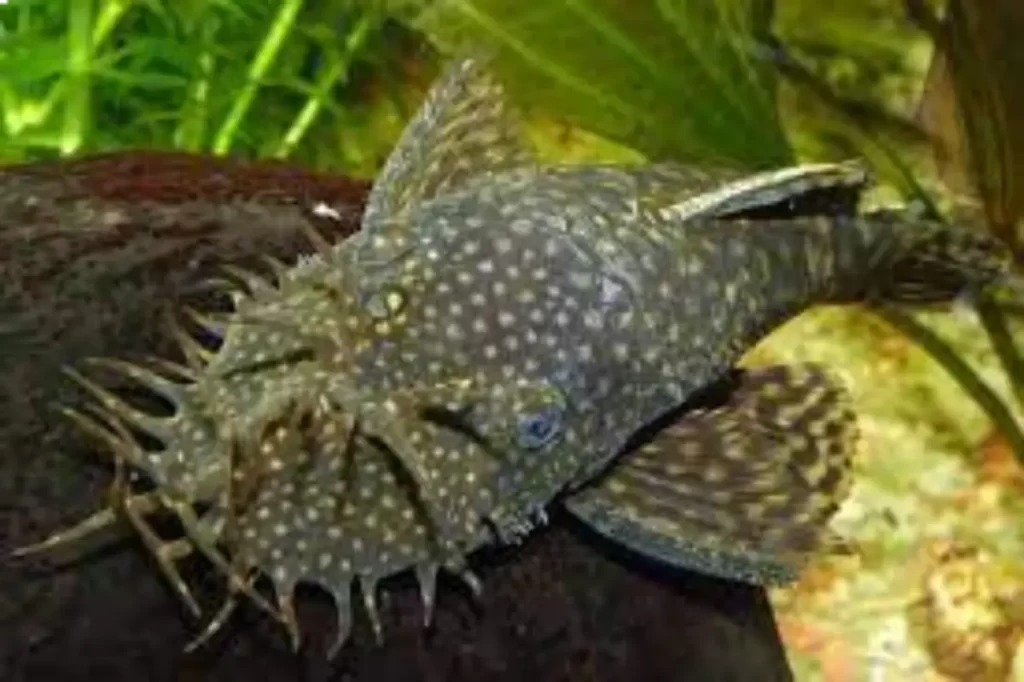
Bristlenose catfish are great at eating brown and green algae. They are also peaceful and easy to care for, making them a great addition to many community aquariums. They can grow up to 6 inches in length and prefer a well-planted tank with plenty of hiding places. Some compatible fish for Bristlenose catfish include tetras, rasboras, and guppies.
7. American Flagfish

The American Flagfish is a great choice for those looking for a natural way to control thread algae and hair algae in their aquarium. It’s important to note that these fish may not eat all types of algae, and they may also require a varied diet of other foods to stay healthy. These fish can easily coexist with other peaceful community fish such as tetras, rasboras, and guppies.
8. Goldfish
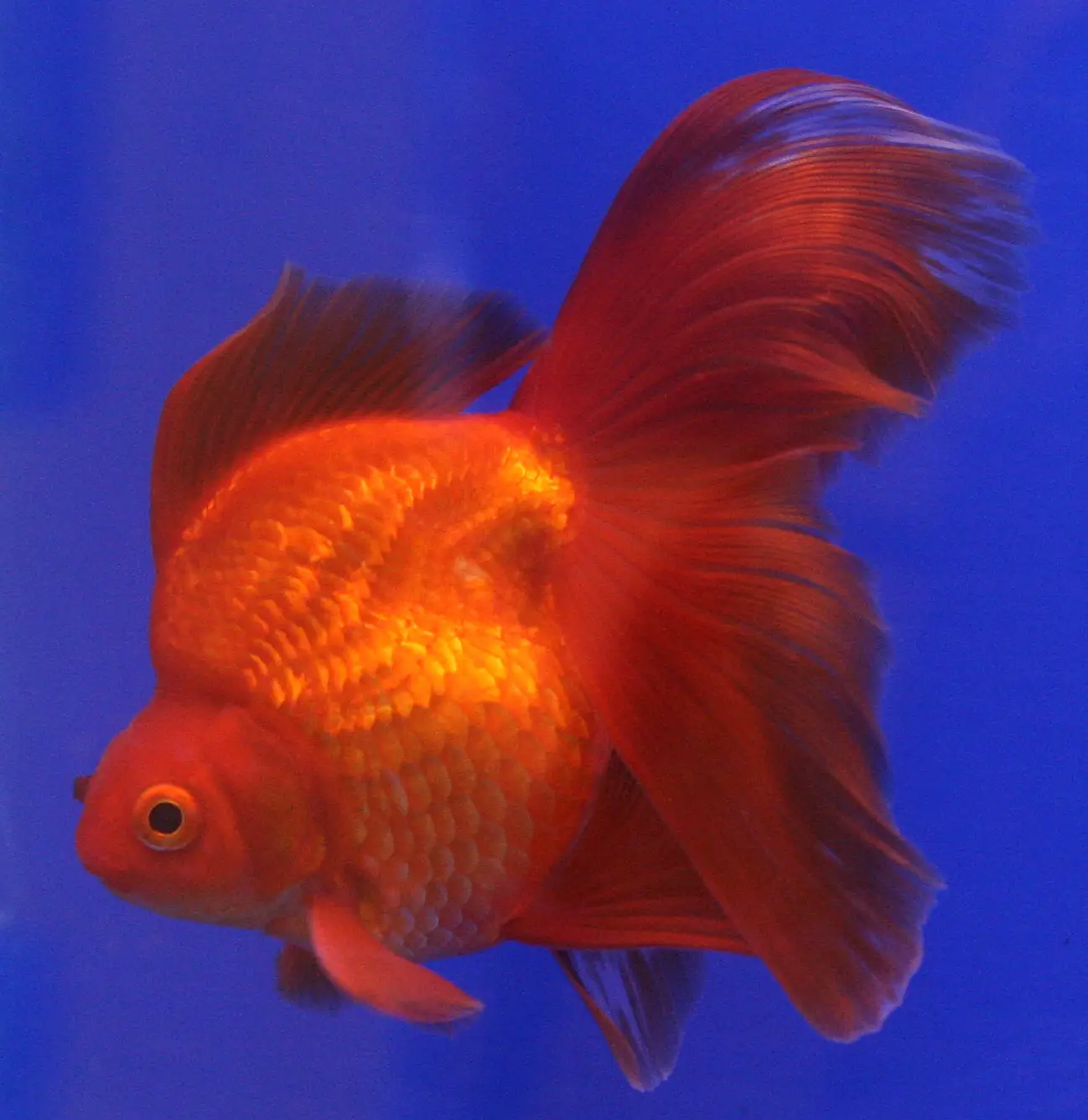
Goldfish are a popular freshwater fish that can help control certain types of algae, including string algae and blanket algae. You should note one thing goldfish are cold-water fish and require a specific environment to survive. So, these fish are compatible with other cold-water fish such as white cloud mountain minnows, hillstream loaches, and dojo loaches.
It is important to note that while these fish can help control algae growth in a tank, they should not be relied upon as the sole means of algae control. Proper maintenance and care, including regular water changes and monitoring of nutrient levels, are also essential for maintaining a healthy and balanced tank.
Frequently Asked Questions(FAQs)
Here are some of the frequently asked questions related to algae in a fish tank, they are as follows:
Can Algae Be Beneficial In A Fish Tank?
Yes, algae can be beneficial in a fish tank by serving as a natural food source, oxygenating the water, absorbing excess nutrients, and providing natural cover. However, excessive algae growth can also be harmful and should be monitored and controlled if necessary.
How Often Should I Clean My Fish Tank To Prevent Algae Growth?
To prevent excessive algae growth in a fish tank, it’s recommended to clean the tank regularly. The frequency of cleaning will depend on several factors, including the size of the tank, the number of fish and plants, and the level of filtration and aeration. As a general guideline, it’s recommended to perform a partial water change and clean the tank every 1-2 weeks.
Can Algae Grow In A Fish Tank Without Light?
No, algae cannot grow in a fish tank without any light. Algae, like all plants, require light to carry out photosynthesis, which is the process by which they produce energy and grow. Without sufficient light, algae will not be able to grow and reproduce.
Conclusion
Algae growth in fish tanks is a common and natural occurrence that can be both beneficial and harmful. While some types of algae can serve as a natural food source for fish and help to maintain the overall balance of the tank’s ecosystem, excessive algae growth can lead to a variety of problems, such as reduced oxygen levels, poor water quality, and unsightly aesthetics.
To manage algae growth in a fish tank, it is important to regularly monitor the water quality and provide appropriate lighting and nutrient levels. Additionally, introducing algae-eating fish or other aquatic species can help to control excess algae growth. However, it is important to note that overstocking a tank with algae-eating species can also lead to other problems, such as increased competition for food and limited swimming space for other fish.
Overall, maintaining a healthy balance in a fish tank requires careful attention to both the biological and environmental factors that contribute to algae growth. By following proper maintenance and care procedures, aquarium enthusiasts can ensure that their fish tanks remain healthy, vibrant, and visually appealing habitats for their aquatic pets.






